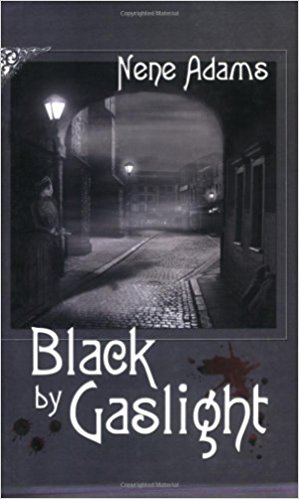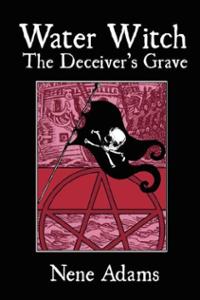There’s a lot to say about this novel—both good and bad. It starts out like a house on fire but finishes in smoldering ruins. Here are some of the good things. First, there is the setting: 1888 London, smoggy, dark, and smelly. Lady Evangeline (Lina, or “the dark-haired lady”) St. Claire is an independently wealthy private investigator. She is tall and strong and versed in the martial arts, like Xena, who, along with Sherlock Holmes, is her inspiration. The Gaby/Watson character is called Rhiannon Moore, who Lina rescues from a life on the streets after falling in love with her at first sight.
In an odd twist, there is another Sherlock Holmes character that plays a big role in the novel. He is called Sherrinford Pike, who lives with his lover, Dr. Ormond Sacker. Lina’s love/hate relationship with Pike is charming and often hilarious. When she accuses him of shooting at her through a dressmaker’s window, he denies it, “even if I did once introduce a cobra into your sitting room. . . . Besides, I thought that you’d sworn not to mention that unfortunate incident with the air rifle again, St. Claire. . . . [and] the arsenic-filled bonbons were an honest mistake committed only once.”
And if that sounds a bit over the top, well, so is everything else in Black by Gaslight. Lina’s language is the language of Jane Austen squared—or maybe the language of the penny dreadfuls that Rhiannon delights in reading. “Rage beat at her and filled her veins with liquid fire. A red mist enshrouded her vision.” And to be truthful, the language is often so well—or oddly—crafted that it escapes being simply romance-novel drivel and often rises to the level of actual creativity. So does the relationship between Lina and Rhiannon. Both are smitten with the other at once, but neither thinks it appropriate to mention it to the other. And when their passion gets the best of them—as it does in strange situations, such as in a carriage when they are chasing a murderer—they will then play it down, or try to pretend it didn’t happen.
But it is almost as if the author gets tired of the novel halfway through. Repetition creeps in, as do inanities. The language becomes tedious, the amount of attention to describing Victorian-era women’s attire takes up too much space, the love story becomes sappy, important incidents are forced—rather than intelligently woven—into the plot, gore is splattered more-than-generously on virtually everything. And then there is the ending, where at least one of the women takes a series of actions so stupid that it defies even my imagination—which is one that has seen more than its share of ridiculous endings. It becomes just another Sherlock Holmes versus Jack the ripper novels, with Jack as someone that constantly hears the voices of prostitutes talking to him. Motivation? Backstory?
The main thing wrong with this novel is the same thing that is wrong with most independently published books in general and lesbian mysteries in particular: the lack of an even halfway-decent editor. Yes, this is an Uber novel and one that was almost certainly first posted to a fan site. And yes, fan sites are notorious for their unabashed enthusiasm for everything Xena (or everything Hermione or everything Kate Janeway) and lack of critical sensibility.
But lack of critical thinking bespeaks a lack of education, and a lack of education is the downfall of civilizations. If you don’t believe me, look around you. What’s worse, competent editors are very few and far between—it takes a great deal of study and reading to even attempt it, while university courses in the fine arts are becoming more and more unfunded. And let’s go even further; good editors command a respectable fee—as indeed they should—and few budding authors or even independent presses can afford one.
So too bad, what started out as a potential Top 20 List novel turned into something that I finished with a sense of relief. What could—with a very competent editor—have been rated near a 5 ends up at somewhere near a 3.
For 250 other Lesbian Mystery reviews by Megan Casey, see her website at http://sites.google.com/site/theartofthelesbianmysterynovel/ or join her Goodreads Lesbian Mystery group at http://www.goodreads.com/group/show/116660-lesbian-mysteries


